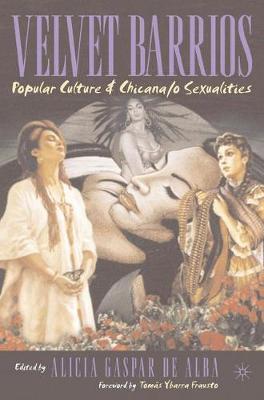Overview
"The essays in ""Velvet Barrios"" collectively intervene in the field of popular culture studies to examine the various ways in which the ideologies of sex maleness and femaleness as well as the ideologies of gender femininity and masculinity are produced and consumed, approved and accepted, resisted and reinvented in the popular arts, rituals, icons, myths, and beliefs of the 'alter Native community' of Mexican descent in the United States. Gaspar de Alba argues that Chicana/o culture is not a subculture but an alter Native culture 'an Other American culture indigenous to the landbase now known as the West and the Southwest of the U.S'. The collection is called ""Velvet Barrios"" because the editor believes that nothing signifies the working class, highly layered, textured, and metaphoric sensibility known as the rasquache aesthetic (that characterizes so much of Chicana/o popular culture) more than black velvet art. In her words, 'What is more evocative of sexed and gendered barrio representations than those images of voluptuous maidens, feathered warriors, airbrushed Chevys, tattooed cholos, and sacred virgins?' From the hagiography of 'locas santas', to the sexual politics of early Chicana activists in the Chicano youth movement, from the representation of Latina bodies in popular magazines to the ritual performance of Mexican femaleness, as enacted by the quinceanera from the iconic fetishization of el Pachuco, la Malinche, and la Llorona in film and literature or the stereotypical renderings of recipe books and calendar art be it baseball, nortena music, or nationalist rhetoric through which Mexican masculinity is measured by fraternity initiations, lowriding, hip hop, detective fiction, or border crossings all of these pieces dialectically engage methods of popular culture studies with discourses of gender, sexuality, identity politics, representation, and cultural production. ""Velvet Barrios: Popular Culture & Chicana/o Sexualities"" represents the first book to focus fully on the more closeted issues of barrio popular culture. There is no monolithic singular 'barrio', or community, which can contain all of these interventions. Instead, this collection helps us to construct a plurality of 'barrios', a diversity of neighbourhoods in which to be/become/signify Chicano and Chicana bodies of the 21st century."
Full Product Details
Author: Alicia Gaspar de Alba
Publisher: Palgrave USA
Imprint: Palgrave Macmillan
Edition: 2003 ed.
Dimensions:
Width: 15.20cm
, Height: 2.00cm
, Length: 22.90cm
Weight: 0.537kg
ISBN: 9781403960979
ISBN 10: 1403960976
Pages: 327
Publication Date: 02 April 2003
Audience:
College/higher education
,
Professional and scholarly
,
Undergraduate
,
Postgraduate, Research & Scholarly
Format: Paperback
Publisher's Status: Active
Availability: In Print

This item will be ordered in for you from one of our suppliers. Upon receipt, we will promptly dispatch it out to you. For in store availability, please contact us.
Author Information
ALICIA GASPAR DE ALBA is Associate Professor of Chicana/o Studies at the University of California, Los Angeles, where she teaches courses on barrio popular culture, border consciousness, lesbian literature and creative writing. She is the author of Chicana Art Inside/Outside the Master's House (Texas 98) and Sor Juana's Second Dream (New Mexico 99).




